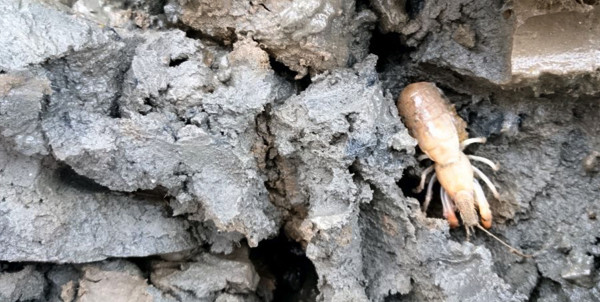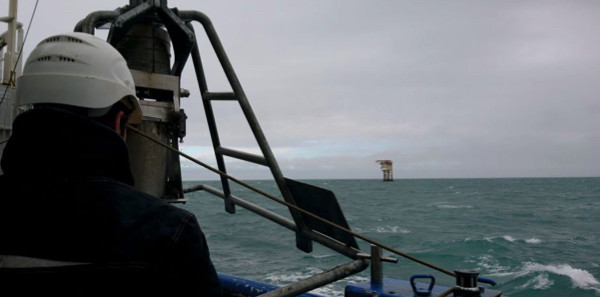Stay up to date via this blog, Twitter @NIOZatSea or Facebook @NIOZnieuws
~~~for the whereabouts of R.V. Pelagia check this page~~~
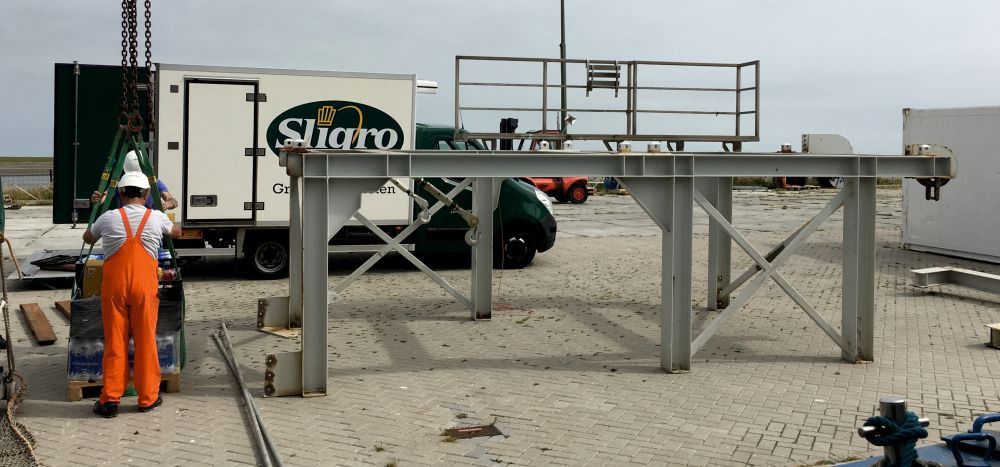
Blog 6 by Henk de Haas, 29th June – Back home
Back home, but not for all of us. Today is the last day of the present cruise. We can see Texel ahead of us and Darci and I will leave the ship. Some of the crew members will go home as well, others will stay. For the latter group this is just 'another day at the office'. Getting into port is part of the job. It doesn’t automatically mean that working time is over. There can be another cruise, or maintenance to be done, and paperwork of course (you can’t outrun bureaucracy, not even on a ship, unfortunately).
While writing this blog, Len the chief officer comes in and gives me the Cruise Evaluation Survey. Paperwork. But it is only two pages and it is useful paperwork, because the scientists feedback can help making future cruises even better. Is there still need for improvement, you might think, keeping in mind the huge amount of vibrocores we retrieved during the first week and being able to do all the work we planned to do during the second week. It’s the weather during week 2. That was a bit of a disappointment compared to the first week. But I am afraid even the Pelagia crew can’t change that.
Many thanks to the crew of the Pelagia.
See you next time.
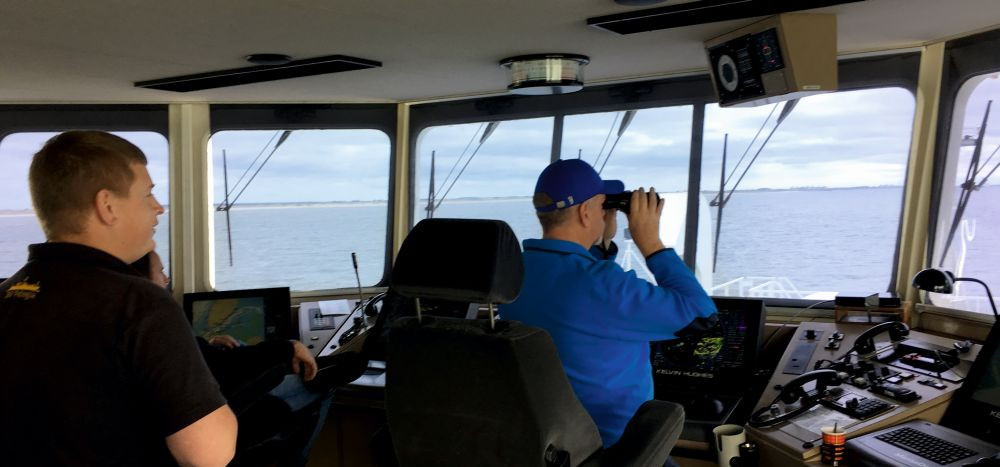
Blog 5 by Henk de Haas, 28th of June – Sound and sediments
Even though the present cruise is still running, we are already preparing the one for next year. During that cruise one of our colleagues plans to study the animals living at the sea bed. It is important to know in advance how the sea bed looks like so he can choose the proper sampling locations beforehand. At several locations during the past week we have mapped the sea bed using the multibeam echo sounder. An ordinary echo sounder uses one sound beam to measure the water depth at a point below the ship. A multibeam echo sounder uses multiple beams to measure the depth at hundreds of locations at once. So it is much faster (and more accurate) then an old fashioned echo sounder. The device not only tells us how deep the water is. The strength of the returned sound also gives information on the type of sediment (clay, sand, gravel) and the distribution of this. Once we know this distribution we take one box core per sediment type. In this manner we can make a sediment distribution map, so we know where to sample next year.
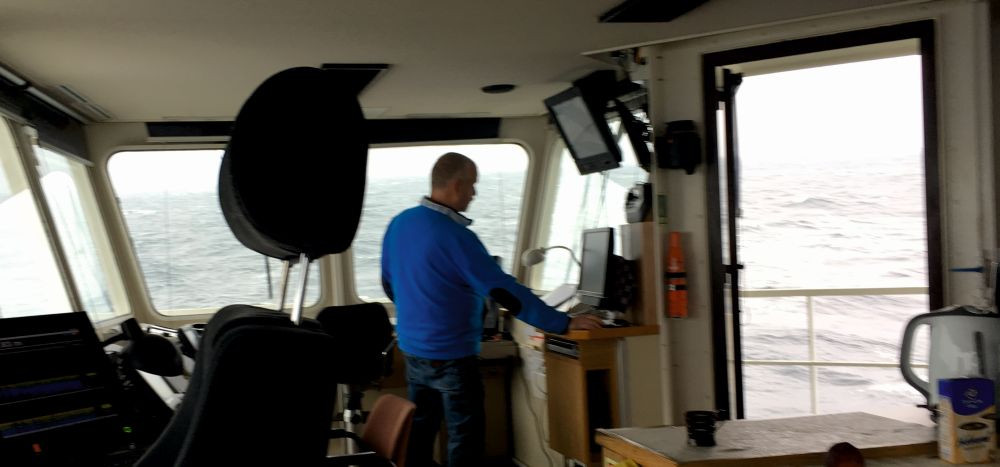
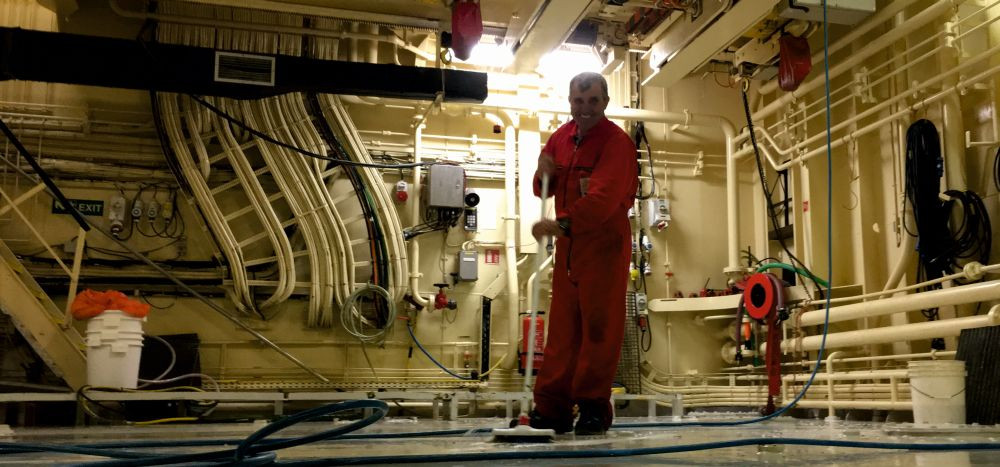
Blog 4 by Darci Rush, 27 June - The fantastic crew on board of the Pelagia
This morning’s tasks consisted of collecting the sediment cores for methane experiments back at NIOZ (see previous blog post). The bacteria I study live only in the top few centimetres of the sediment, where there’s still oxygen, so we needed to be sure to collect enough material. The cores we took looked beautiful – you can really see a clear gradient between the layer that contains oxygen (top, light brown) and the layer below that doesn’t (bottom, grey-black).
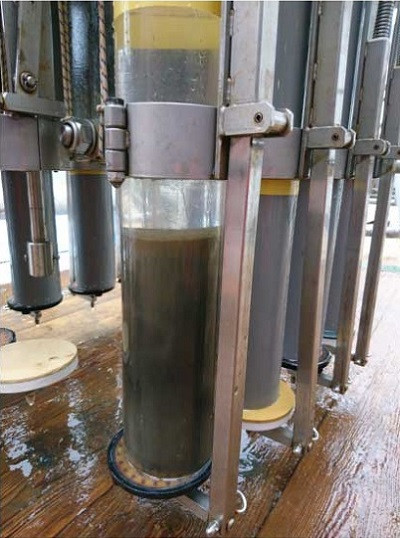
As always, the crew (Roel, Bas, Martin, and Norberto) were so helpful: fixing the vital yellow tape, getting the multicorer in and out of the water, and getting the cores ready for the next deployment. Henk was labelling cores as they were finished, and climbed the stairs countless times down to fridge where they’ll be stored until we reach land. Roald, in the meantime, was fixing an O-ring issue with one of the in situ pumps I used yesterday. Work on board the Pelagia is incredibly easy with such excellent support.

While we were busy on deck, the work inside the ship beat on as usual. Engineers Jaap and Inno never fail to keep us moving forward as we multibeam the seafloor. All smiles, Captain, John, Chief Mate, Len, and 2nd Officer, Rik are approachable and enthusiastic about the work we do. Off-duty, Len and Rik came up to the bridge yesterday to aid in the multibeam-search for methane bubbles. John, getting off his midnight shift, even came down to help throw the wooden blocks over board.
Meanwhile, our Cook, Hassan and Steward, Vitalijs are busy organising the ever-delicious meals we get served on board. As one of the only two vegetarian on this cruise, I appreciate that it is inconvenient to prepare special dishes just for us. But Hassan does it. And he does it well. I eat better (and more) here than I do at home. Luckily, there is a gym below deck!
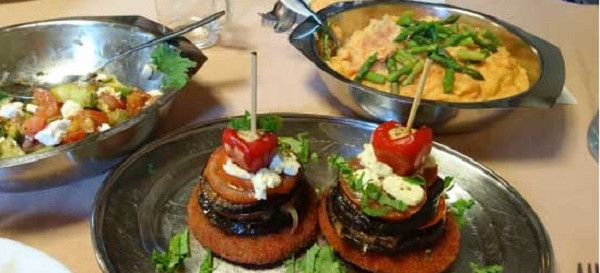
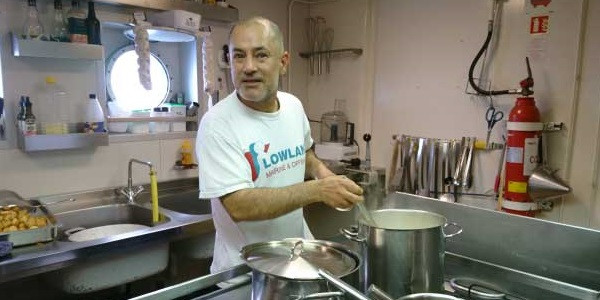
Blog 3 by Darci Rush, 26th June - In search of methane
Today we went in search of methane. My research within the Netherlands Earth System Science Center focuses on understanding past methane gas emissions from the ocean. Methane is a greenhouse gas, and has been implicated in past climate change, when average global temperatures were more than 8°C warmer than today. I want to establish markers for the bacteria that consume methane before it reaches the atmosphere, thereby quenching the source of this gas.
Dogger Bank
These bacteria live in both water and sediments that contain methane, and I want to study them at the Dogger Bank, in the North Sea. Methane has been observed previously at Dogger Bank but no one has investigated the organisms that eat it, here. So, today after breakfast, we set out multibeaming the seafloor in search of bubbles (of methane) that escape from the sediment. I’m lucky to be on board with the ultimate Bubble Hunter – Henk. It took some time and a little bit of nail-biting, but he succeeded. Once we found a decent source of methane, we put pumps into the water, filtering the water column overlying the methane-source sediment.
Tomorrow morning we will also collect cores from the sediments. The cores and filters that I collect contain millions of little methane-eating bacteria. These will be brought back to NIOZ, were I will subject them to different temperatures, pH, and methane concentrations in order to see how their communities shift with environmental changes. Hopefully I’ll be able to establish a marker for these communities in order to trace them back through time.
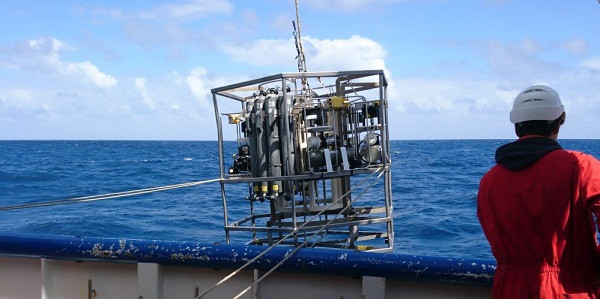
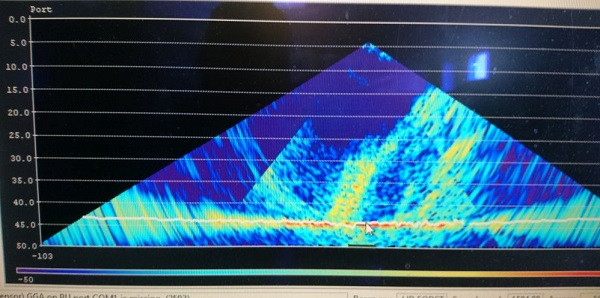
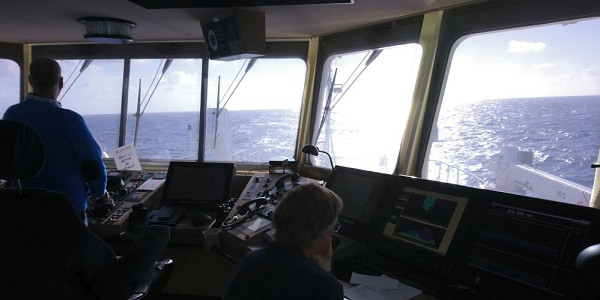
Blog 2 by Henk de Haas, 25th of June – Plastic and wood
At the start of this blog I mentioned something on throwing wood into the water. We did!
The reason we did this is because colleagues at the University of Oldenburg asked us to help them with their project called Macroplastics Pollution in the Southern North Sea – Sources, Pathways and Abatement Strategies. The aim of this project is to investigate the sources of plastic litter, its pathways via the rivers and coastline into the German Bight as well as its dispersal and accumulation throughout the North Sea.
In order to do so, a team of oceanographers, geoecologists, physicists, biologists and geographers is using numerical models which will be validated and optimised through coastal and offshore releases of several GPS-drifters and thousands of wooden drifters at potential litter sources. And the latter is what we did: on two locations we released 800 blocks of wood, each with its unique identification number, into the North Sea.
Anyone who finds one of these blocks is asked to report back the drifter’s ID number and date and location when and where found via the project’s website: macroplastics.de. So if you find one of these blocks, do help our colleagues in Germany and enter the required information on their website.
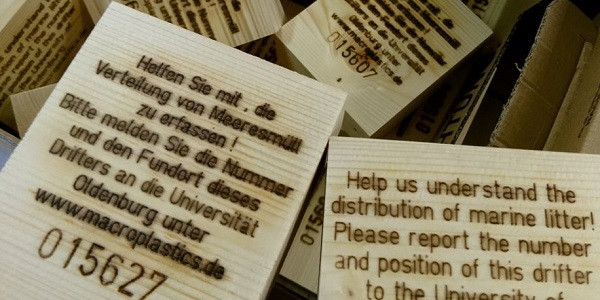
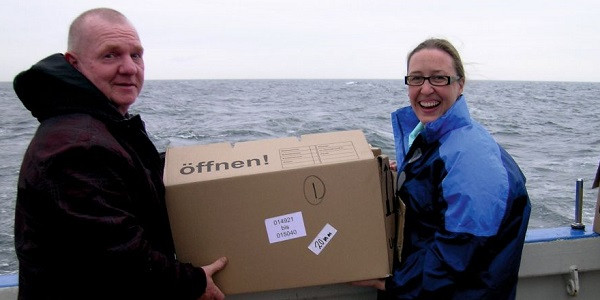
Blog 1 by Henk de Haas, 24th of June – A muddy tour around a platform
Today has been a muddy day. Muddy, because we have taken 12 box cores (=sea bed sediment samples) in muddy sediments around an offshore gas production platform. Why?, you might think. The reason is that at NIOZ some of our colleagues are working on a project called INSITE which studies the effect of such a platform on the animals living on the sea bed near to that platform. And since we planned to go to the area anyway, they asked us to take some samples for them. Taking this type of samples always ends up in muddy people wearing muddy clothes on a muddy deck. But do not worry about our and the ships personal hygiene: there are showers and laundry machines on board and the ship is fitted with powerful fire hoses, so man, clothes and ship are clean in no time.
